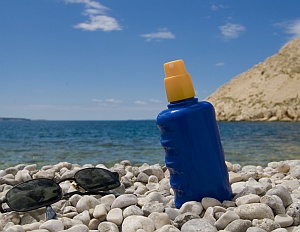
© iStockphoto.com/dbencek
Multiple self-healing squamous epithelioma (MSSE) is a rare form of skin cancer characterized by scaly tumors that grow quickly for several weeks before spontaneously regressing and leaving deep pitted scars. Birgit Lane at the A*STAR Institute of Medical Biology and an international team of co-workers have now identified the genetic cause of MSSE.
Previous studies have narrowed the source of MSSE down to a 4-megabase region of chromosome 9, but the precise location of the genes involved was unknown. The international research team used state-of-the-art techniques to sequence 2,552 exons—sections of protein-coding DNA—from within a 24.2-megabase region of chromosome 9. They compared the results between healthy individuals and individuals with MSSE and found that all of the affected individuals harbor mutations in the gene TGFBR1. Altogether the researchers managed to uncover 11 distinct mutations, none of which were found in healthy individuals.
TGFBR1 encodes a receptor for transforming growth factor beta (TGF-β), which spans the cell membrane and relays chemical signals to the cytoplasm. TGF-β is a protein that has multiple roles in development, particularly in the regulation of cell proliferation and cell migration. Disturbing the TGF-β pathway can lead to uncontrolled cell growth and increase the risk and invasiveness of cancer. The findings show that MSSE is one of the many consequences of mutations in TGFBR1.
Interestingly, mutations in TGFBR1 are known to cause Loeys–Dietz syndrome, a non-cancerous connective tissue disorder related to Marfan syndrome. Individuals with Loeys–Dietz syndrome have serious defects in their blood vessels and aorta. The researchers deduced that MSSE is different because of the different nature of the mutations: MSSE mutations prevent the production of functional proteins from the mutant allele, leaving the skin cells of individuals with such mutations vulnerable to ultraviolet radiation and at increased risk of developing skin cancer.
Loeys–Dietz mutations, on the other hand, are missense mutations, which cause the synthesis of mutant proteins that can still activate the TGF-β signaling pathway. Individuals with such mutations display elevated TGF-β signaling and might develop vascular disorders during their development.
Lane and her team are confident that their findings could lead to new ideas for skin cancer therapy. “Discovering the mutations underlying MSSE is only the first step,” says Lane. “We are now trying to understand what makes the tumors shrink and heal spontaneously.”
The A*STAR-affiliated researchers contributing to this research are from the Institute of Medical Biology and the Bioinformatics Institute.



